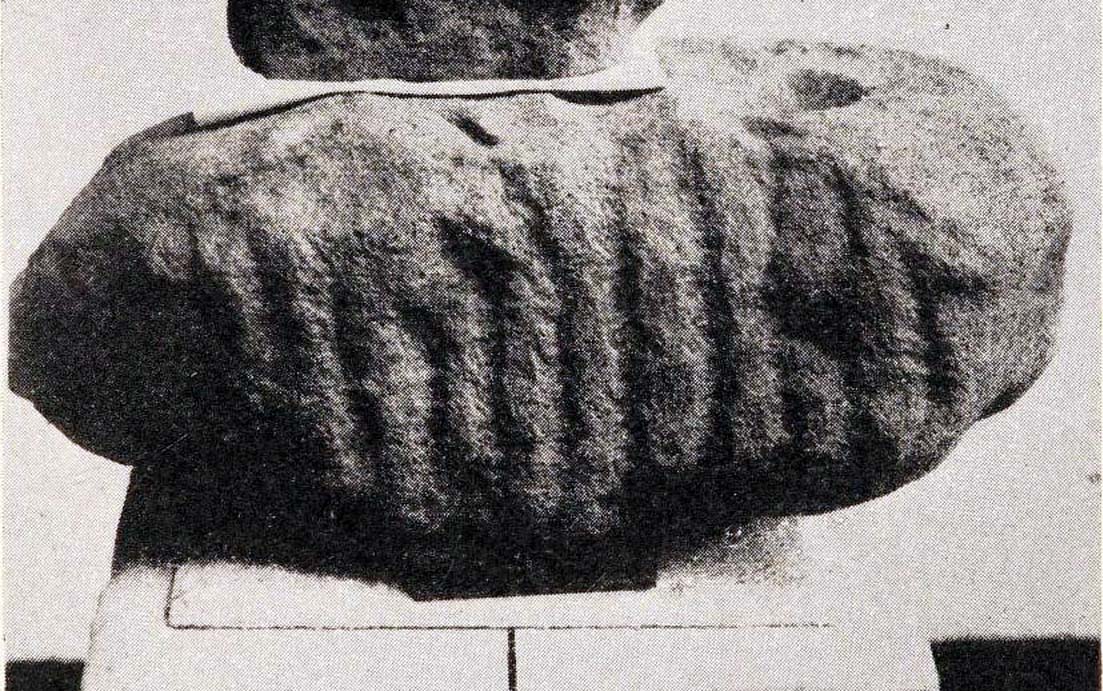Cup-and-Ring Stone: OS Grid Reference – NZ 75402 19222
Also Known as:
- BOU-5 (Brown & Chappell)
Archaeology & History

Inside the once prominent prehistoric tumulus on the Cow Keeper’s Field (now destroyed), the northern antiquarians William Hornsby and John Laverick (1920) came across two small portable petroglyphs: the Cow Keeper’s Field 1 carving, plus this “peculiarly marked stone” as they put it, some “5ft south of the centre” where a cist, or stone-lined burial existed. Measuring 18in by 7in, the rock carving consists of at least one large cup-marking which is clearly evident on top of the stone, plus what seems to be another one next to it, half-covered. Along the side of the stone, a series of twelve roughly parallel lines have been carved out, running down to the bottom of the stone. Rock art researcher and writer Graeme Chappell (2017) tells us the carving is supposed to be “in storage in the Dorman museum in Middlesborough,” although no one has seen it in years. It would be worthwhile if fellow research students could visit the said museum to recover this and other portable cup-marked stones that were found in the area.
References:
- Brown, Paul & Chappell, Graeme, Prehistoric Rock Art in the North York Moors, Tempus: Stroud 2005.
- Chappell, Graeme, Personal communication, October 4, 2017.
- Crawford, G.M., Bronze Age Burial Mounds in Cleveland, Cleveland County Council 1990.
- Elgee, Frank, Early Man in North-East Yorkshire, John Bellows: Gloucester 1930.
- Hornsby, William & Laverick, John D., “British Barrows round Boulby,” in Yorkshire Archaeological Journal, volume 25, 1920.
© Paul Bennett, The Northern Antiquarian
The map could not be loaded. Please contact the site owner.